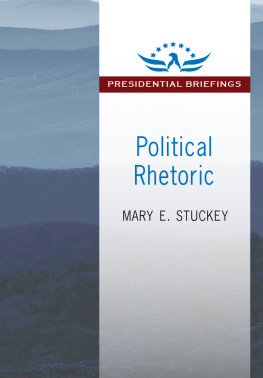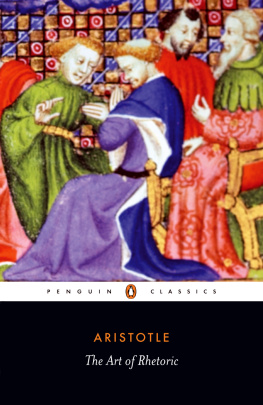A Revolution in Tropes
A Revolution in Tropes
Alloiostrophic Rhetoric
LEXINGTON BOOKS
Lanham Boulder New York London
Published by Lexington Books
An imprint of The Rowman & Littlefield Publishing Group, Inc.
4501 Forbes Boulevard, Suite 200, Lanham, Maryland 20706
www.rowman.com
Unit A, Whitacre Mews, 26-34 Stannary Street, London SE11 4AB
Copyright 2015 by Lexington Books
Dedication quote courtesy of The Rule of Metaphor: Multidisciplinary Studies of the Creation of Meaning in Language, trans, Robert Czerny (Toronto: University of Toronto Press, 1977), 45.
All rights reserved. No part of this book may be reproduced in any form or by any electronic or mechanical means, including information storage and retrieval systems, without written permission from the publisher, except by a reviewer who may quote passages in a review.
British Library Cataloguing in Publication Information Available
Library of Congress Cataloging-in-Publication Data
Library of Congress Cataloging-in-Publication Data is available
ISBN 978-0-7391-504-8 (cloth : alk. paper)
ISBN 978-0-7391-9505-5 (electronic)
 TM The paper used in this publication meets the minimum requirements of American National Standard for Information Sciences Permanence of Paper for Printed Library Materials, ANSI/NISO Z39.48-1992.
TM The paper used in this publication meets the minimum requirements of American National Standard for Information Sciences Permanence of Paper for Printed Library Materials, ANSI/NISO Z39.48-1992.
Printed in the United States of America
Yes, tropes, but all of them. Paul Ricoeur
Acknowledgments
First and foremost, we acknowledge the practice of writing together as equals, each working hard to figure out/in equity and authority of access to meaning making with the other. And we acknowledge our Deleuzian sensibility of being always already a bunch of others.
We acknowledge the Sutton and Mifsud brand as a brand, a mechanism for ease of reference and identification, not an indication of the order (organization and command) of authorship. We wish to acknowledge that ours is a collaboration that renders rather useless the idea of individual authorship, or perhaps even authorship at all. To acknowledge our alloi goal means operating with an intense awareness that the spirit of collaboration steers rhetorics theoretical compass beyond its boundaries.
We acknowledge the lesson in creative work that Henry Johnstone offers: a creative process consists of a series of steps, none of which is determined by its predecessors but each of which, once taken, is seen to have been a fitting sequel to its predecessors. A creative process finds two or more people cooperating, taking turns to make the step that is retrospectively seen to have been appropriate. We acknowledge our collaboration as creative, cooperative, equitable.
Second, each of us wishes to acknowledge our teachers. Jane is indebted to George A. Kennedy and his seminar in Aristotles Rhetoric while working on her doctorate at the University of Colorado, Boulder. Kennedys love of this text inspired her to read closely; William Grimaldi who presented his work on Aristotles Rhetoric to her in both formal and informal settings affirming through extended conversations Janes commitment to studying Aristotle through the lens of difference; T. C. Johnson whose classes at Western State University in Gunnison, Colorado in ancient Greek writers encouraged her study of women; and Thomas S. Frentz whose seminar in rhetoric at the University of Colorado, Boulder led to their many exchanges about Zen and the Art of Motorcycle Maintenance,a book that inspired her to pursue the sophists, which led Jane to John Poulakos with whom she initiated a talk in 1983 at the National Communication Association, Washington, DC, a conversation on rhetoric continuing still. Mari Lee wishes to acknowledge the generosities of all her teachers, especially Henry Johnstone, whose emeritus classroom at the Atherton dining room was so fitting for their years long explorations of philosophy and rhetoric; David Vancil, who insisted on her extended study of ancient Greek and encouraged her study of doxa in ancient Greek rhetorical theory; Jay Ward, her English professor at Thiel College, who most generously invited her to study with him the history and theory of rhetoric across two semesters of independent study; and Hugh Ringer, with whom she had the honor of oratorical training starting in the seventh grade as a member of the Mercer High School Speech Team, instilling in her a life-long love of rhetoric.
Both of us wish to acknowledge as well the role John Poulakos plays in our work. Not only has he been a constant source of energy, banter, and conversation testing and exploring our ideas over the past twenty years, but he is the teacher of our contributors, Michele Kennerly and Odile Hobeika.
Both of us wish to acknowledge our husbands for their constant support of our writing.
From Jane to Jerry.
And, from Mari Lee to Brian.
Introduction
Jane S. Sutton and Mari Lee Mifsud
A Revolution in Tropes
When you change the way you look at things, the things you look at change Max Plank
Our view of tropes is that they are rhetorics own unique resources, but for ineluctable historiographical reasons have been more or less closed off from the production of theory. Our trope project began simply enough. If the workings of tropes could be identified in a new way, then the aim and purpose of rhetoric could be retheorized in terms new to democratic deliberation. Working under the slogan Yes, tropesbut all of them, we attempted a new classification system based on the Greek roots of hundreds of tropes listed in various old and new sources such as Bernard Dupriezs A Dictionary of Literary Devices, A-Z and Richard Lanhams A Handlist of Rhetorical Terms, respectively.
Our suggestion led us to create charts of tropes. Eventually after several starts, we organized a heck of a lot of tropes in relation to their function specified by their root domain. Metaphor fell under the category of the root phora; anastroph under stroph; and antimetabol under bol. The work was tedious. We quit working on it from time to time. Our trope project seemed to be getting us closer and closer to just compiling pages and pages of excel spreadsheets, but all the while farther from our question, how do tropes work?
One day, unexpectedly, we discovered through our root work that a connection exists between the trope antistroph and katastroph. Bascially, katastroph is a subset of antistroph which effectively binds them uniquely. The binding sequence appears in Aristotles Rhetoric and functions in a static model straight away to originate and uphold a theory of civic discourse. When we recognized this, we were stunned and began down another route. We are jumping ahead of ourselves. We should start over, at the very beginning.
When we met some twenty years ago, Jane, writing on the history and theory of rhetoric, was immersed in the study of Aristotles Physics. Mari Lee, a doctoral student in rhetoric, wondered why. She learned that Jane was trying to figure something out about Aristotles view of contingency in rhetoric. Jane was finding from Aristotles idea of an earth at rest that his rhetoric was not only built for a polis but also that it was designed in the earths model. That is, Rhetoric, the polis, and the earth are interconnected. In one of our first conversations, we found ourselves astonished as we recognized that, to the extent that











 TM The paper used in this publication meets the minimum requirements of American National Standard for Information Sciences Permanence of Paper for Printed Library Materials, ANSI/NISO Z39.48-1992.
TM The paper used in this publication meets the minimum requirements of American National Standard for Information Sciences Permanence of Paper for Printed Library Materials, ANSI/NISO Z39.48-1992.